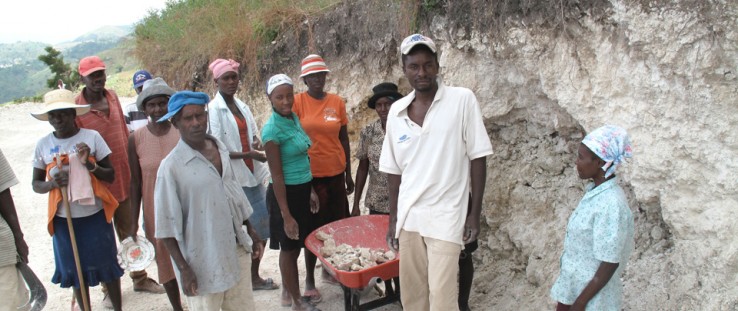 A key constraint to agricultural development in Fond Baptiste, Haiti, is the poor condition of rural roads. Above, members of the community carry out labor-intensive road maintenance.
Jacob Greenstein
A key constraint to agricultural development in Fond Baptiste, Haiti, is the poor condition of rural roads. Above, members of the community carry out labor-intensive road maintenance.
Jacob Greenstein
 A key constraint to agricultural development in Fond Baptiste, Haiti, is the poor condition of rural roads. Above, members of the community carry out labor-intensive road maintenance.
Jacob Greenstein
A key constraint to agricultural development in Fond Baptiste, Haiti, is the poor condition of rural roads. Above, members of the community carry out labor-intensive road maintenance.
Jacob Greenstein
Twenty-five years ago, Marie Lucienne Joseph abandoned needlework in favor of agriculture. “Last season was so terrible, I regretted my decision,” recalls Joseph, now 50 years old. Constant logistical challenges in Fond Baptiste—including heavy rains and seasonal flooding that sometimes made the mountain road impassable—often impeded transport of her potato crop to markets.
“When it rained, only the bravest took the road, and often came back with injuries. We suffered sprains and strains—even the donkeys would fall,” she said.
A key constraint to agricultural development in Fond Baptiste and throughout Haiti is the poor condition of its rural road infrastructure. Without sufficient planning and proper maintenance, a rural road is not useful beyond a couple of harvests and may not survive the first rainy season after rehabilitation.
The relationship between rural road infrastructure and well-being is clear throughout the Caribbean nation. It impacts access to schools, health centers and other key services, as well as economic livelihoods for the 5 million people who live outside of cities. Physical access to markets is crucial to improving life for the country's approximately 6 million agricultural workers. Access to basic services in rural areas is very limited, as only 10 percent of those living in rural areas have access to electricity and less than 8 percent have access to potable water. Poor road conditions lead to damaged products and increased post-harvest losses. In a nation where 88 percent of the rural population lives under the poverty line, these losses often come as devastating blows.
A development approach that incorporates community participation and regular maintenance can extend the life of a road and justify future infrastructure investments. “Our work on improving roads in Haiti is an important step toward strengthening markets in selected development corridors,” says James Woolley, senior agronomist at USAID/Haiti. “A well-built road that is regularly maintained by communities is a strategic investment that reduces post-harvest losses, increasing farmers' incomes. It really means a way forward for the people struggling to survive in these communities.
“We have estimated that reducing spoilage that results from poor roads has the potential for increasing gross farm income by between 10 and 30 percent, and contributes to greater food security. Improved roads can also increase school attendance and visits to health facilities.”
But Which Road?
To benefit farmers like Joseph, the U.S. Government's flagship food security initiative, Feed the Future, is testing innovative models to select the most effective roads to rehabilitate and to increase regular maintenance by involving communities in the process and raising awareness of the benefits.
Jacob Greenstein, a senior engineer at USAID's Washington, D.C. headquarters, says that the selection of roads should be based on multiple criteria, including agricultural potential, population density, status of accessibility, and potential for increasing access to health and education facilities. “Involving the communities in the selection of roads and in maintenance lowers unit costs, and more importantly, makes them feel real ownership of the road,” he says.
The positive effects of this approach can now be seen along La route de Fond Baptiste in the Matheux region—one of the high-impact areas selected. As a preliminary condition for rehabilitating the 18-kilometer Fond Baptiste road, which bridges more than 500 small farms, USAID signed an agreement with the Arcahaie municipality and two local farmers associations with a total of 1,230 members—over half of them women.
Under the agreement, USAID will work with a local engineering firm to perform the rehabilitation work, while the municipality will provide maintenance materials and permits. The farmers associations have committed to devoting 15 days per year to maintenance work after each rainy season and to plant vetiver grass along the road to stabilize the banks of drainage ditches. Vetiver grass is a hardy plant used to protect soil against surface water runoff and erosion.
Related Content
Jannius Delice, a local association coordinator, remembers what the road used to look like after each heavy rain. “Access to the road was completely blocked after the rain would fall. Whether on foot or by horse, it was basically impossible to travel on the road because of the rocks, soil and mud that would come down from the mountain and cover the passage. Now, even when the rain causes some damage in the zone, the road does not become blocked like it used to.”
Joseph agrees. “Now after heavy rain, we only need to do small reparations to the road, something that the people from the region can do themselves. My husband is one of the community members committed to participating in this maintenance work.”
Paving the Way for Motivation
For farmers worldwide—including those in rural Haiti—poor infrastructure and other barriers to markets not only affect their participation but also their motivation. “Fond Baptiste farmers lost interest in agricultural production because their products could not reach the market because of bad roads. With this road rehabilitation work, we believe [they] will see some improvement in their lives,” Delice said during the project's inauguration in November of last year.
Six months after the project began, Delice's prediction has come to fruition. The Fond Baptiste community associations volunteered to maintain the road during the current rainy season, which runs roughly from May to November, rehabilitating drainage canals at critical points.
In doing so, communities were socialized to the long-term benefits of consistent road quality. Prior to the rehabilitation, which was accompanied by distribution of improved seed varieties to people along the road, crops were primarily consumed by farm families. There was often not enough surplus to spare, and markets were hard to reach. When farmers did try to reach market, their crops would often spoil on the way, discouraging farmers from taking the risk.
“I live much better now,” says Joseph, “I do not have to wake up at 1 a.m. to go sell my goods to market.”
The road has reduced transportation costs from $15 to $5 per potato crate because of fewer damaged crops. These cost savings further increase the competitiveness of Fond Baptiste's goods in the market.
“Now we have enough to eat and to sell!” exclaimed Joseph when asked how her life has changed. The road rehabilitation has also enabled her to send food and other supplies to her children who live in the capital, allowing her to feel more confident that her children are eating well and are taken care of.
“Confidence in the farm sector among rural Haitians will only increase with expanded road rehabilitation,” said USAID's Haiti Mission Director Carleene Dei.
Cost Drives Paving Plans
According to the World Bank, only 5 percent of the rural population in Haiti has access to paved roads, while 33 percent use dirt roads.
“With so much need, perhaps the most innovative part of this program is its concern for sustainability and making the best use of limited resources to benefit the most people,” says Haiti Deputy Mission Director Tony Chan.
A key aspect of this strategy in Haiti was improving the selection of rural roads to be rehabilitated, according to Woolley. “This selection not only includes cost-benefit analysis but also consultations with the affected communities—an international best practice—and the creation of a rural road maintenance fund,” he said.
In line with reform efforts designed to bolster local capacity in the countries USAID works in, the Agency will contract directly with local businesses and organizations to repair rural roads in Feed the Future target areas—the country's potential agricultural breadbaskets. The development corridors selected by the U.S. and Haitian Governments have strategic production areas that will then sell better quality products to Haitian and international markets.
In addition, hiring members of the community for maintenance will provide additional income to rural households, while farmers reap the benefits of improved market access. Meanwhile, non-farm-related benefits show up in increased access to basic services.
In order to ensure sustainability, the Agency is working with the Ministry of Agriculture to create a maintenance fund and hire local partners to continue the upkeep and repair of rural roads beyond the life of the program, and ensure that farmers like Marie Lucienne Joseph will better endure the wear and tear of many rainy seasons to come.







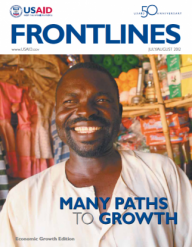

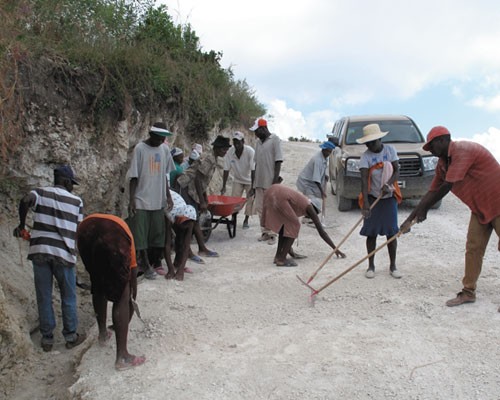
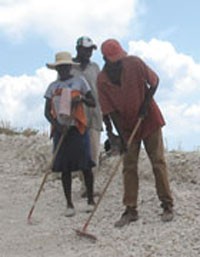
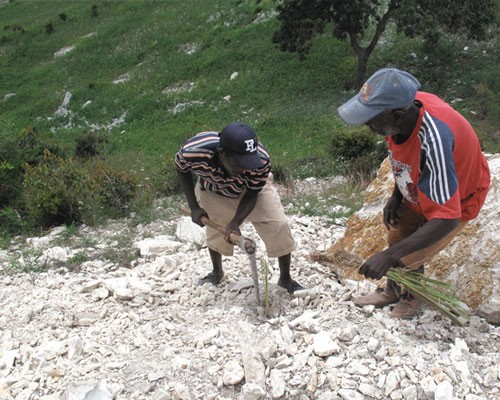
Comment
Make a general inquiry or suggest an improvement.